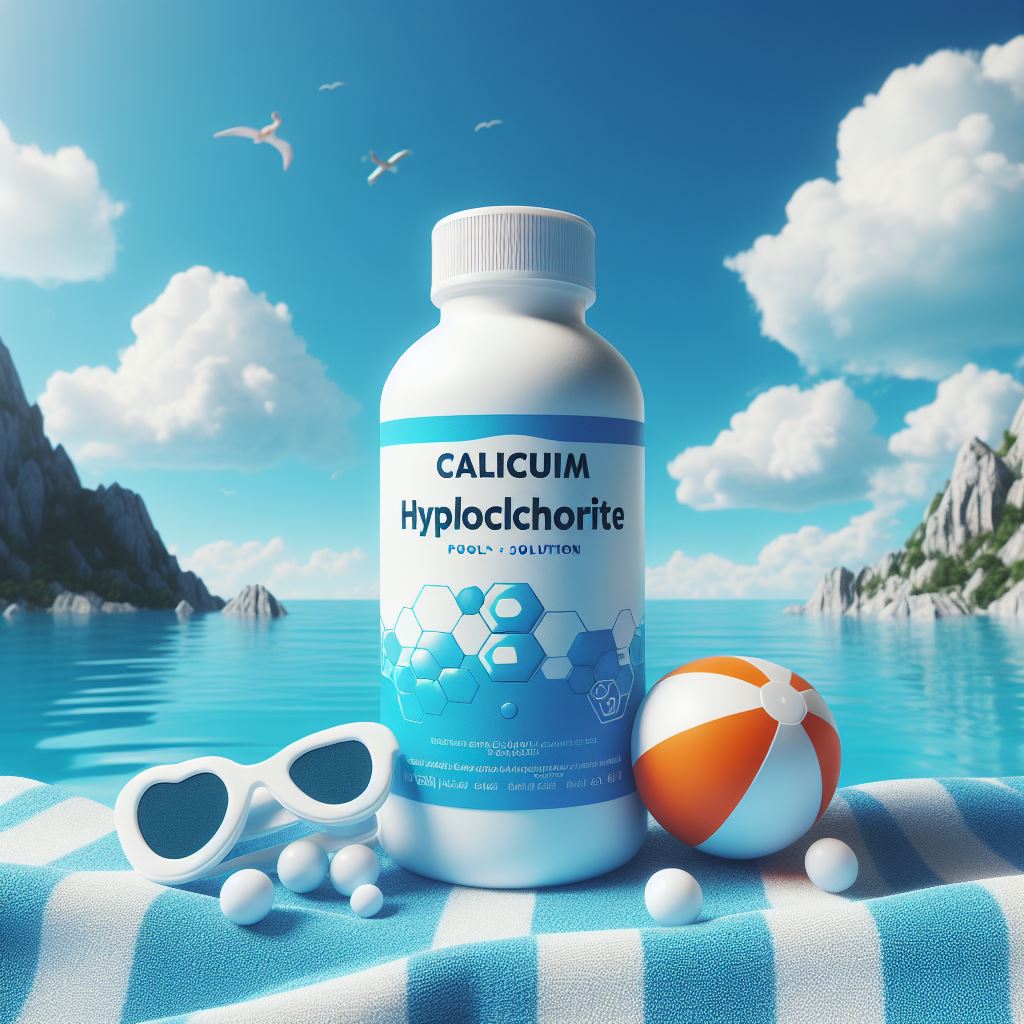Swimming pools are popular recreational facilities worldwide, providing a cool retreat during hot summer days. However, these pools can also become breeding grounds for various microorganisms due to the warm, moist environment combined with organic matter from swimmers. Therefore, maintaining pool water quality is critical for preventing infections and ensuring a safe swimming experience. Calcium hypochlorite, a widely used disinfectant in swimming pools, plays a pivotal role in this process. This article explores the effectiveness of calcium hypochlorite against various microorganisms found in swimming pool water.

What is Calcium Hypochlorite?
Calcium hypochlorite (Ca(ClO)_2) is a chemical compound that releases hypochlorous acid (HOCl) when dissolved in water. Hypochlorous acid is the active disinfecting agent, providing a potent oxidative attack on microbial cells. This compound is favored in pool sanitation due to its stability, ease of storage, and high chlorine content, making it an efficient disinfectant against a wide range of pathogens.
Mechanism of Action
The disinfecting power of calcium hypochlorite primarily lies in its ability to release hypochlorous acid upon dissolution. Hypochlorous acid penetrates the cell walls of microorganisms, disrupting cellular functions by oxidizing sulfhydryl groups and other critical cellular components. This oxidation leads to the inactivation of enzymes, damage to the DNA, and ultimately, the death of the microbial cell.
Microorganisms Targeted by Calcium Hypochlorite in Swimming Pools
Bacteria
Calcium hypochlorite is highly effective against a variety of bacteria commonly found in swimming pool water, including:
Escherichia coli (E. coli): A bacterium commonly found in the intestines of humans and animals. Certain strains can cause severe abdominal cramps, diarrhea, and vomiting.
Pseudomonas aeruginosa: Known for causing dermatitis and ear infections (swimmer’s ear) in individuals exposed to contaminated water.
Legionella pneumophila: The causative agent of Legionnaires’ disease, a severe form of pneumonia.
Staphylococcus aureus: Can cause skin infections and is known for its resistance to many antibiotics.
Viruses
Calcium hypochlorite can inactivate several viruses that might be present in pool water, such as:
Enteroviruses: Including coxsackieviruses and echoviruses that can cause a range of illnesses from mild flu-like symptoms to more severe conditions like meningitis.
Norovirus: A highly contagious virus causing gastroenteritis, leading to diarrhea, vomiting, and stomach pain.
Adenoviruses: Responsible for respiratory illnesses, conjunctivitis, and gastrointestinal infections.
Fungi
Fungal pathogens, such as those causing athlete’s foot (Tinea pedis) and other dermatophytoses, can also be controlled with calcium hypochlorite.
Parasites
Calcium hypochlorite is effective against several parasites, including:
Cryptosporidium parvum: A chlorine-resistant protozoan that causes cryptosporidiosis, a diarrheal disease.
Giardia lamblia: Another protozoan leading to giardiasis, characterized by diarrhea, gas, and stomach cramps.
Factors Affecting Disinfection Efficacy
The effectiveness of calcium hypochlorite in eliminating microorganisms depends on several factors, including:
Concentration of disinfectant: Higher concentrations generally increase disinfection efficacy but must be balanced with safety concerns for swimmers.
Contact time: Sufficient exposure time is necessary for the disinfectant to inactivate microorganisms.
pH of the water: The disinfecting action of hypochlorous acid is optimal at a pH range of 7.2 to 7.8.
Temperature: Higher temperatures can increase the disinfection rate but also accelerate the decomposition of calcium hypochlorite.
Presence of organic matter: Organic compounds in pool water can reduce the available chlorine, decreasing its disinfecting capability.
Conclusion
Calcium hypochlorite is an effective disinfectant for swimming pools, capable of inactivating a wide range of microorganisms, including bacteria, viruses, fungi, and parasites. Its use is crucial for preventing waterborne infections and ensuring the safety and health of swimmers. By understanding the factors that influence its efficacy, pool operators can optimize disinfection protocols to maintain high water quality standards.